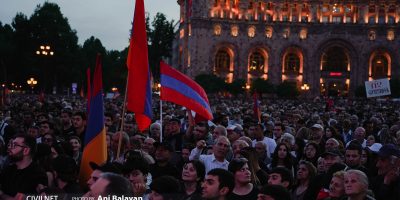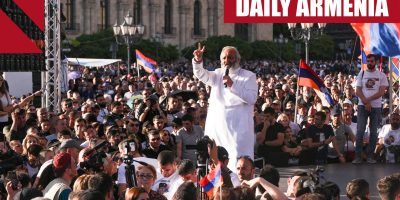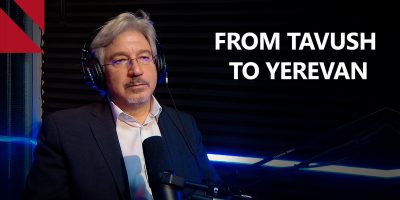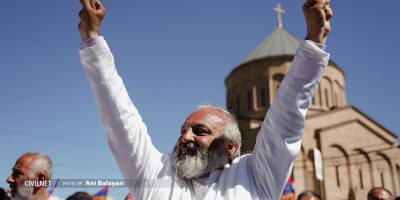By Nare Galstyan
Armenia-Diasposra relations have been accompanied by ups and downs։ sometimes there is confidence and genuine care, sometimes lack of reliability and transparency. The Velvet Revolution, “scandalous” revelations about the director of “Hayastan” All-Armenian Fund, the appointment of new Minister of Diaspora and preparation of changes in diaspora policy inspire hope that there can be new opportunities for rehabilitation of State-Diaspora relations. Despite these promising developments, the amount raised by “Hayastan” All-Armenian Fund’s 21st Telethon is not very different – if not less – than the amounts that have been collected in previous years.
What are the fundamental challenges of Diaspora philanthropy that are often left in the shade under the often-used “distrust towards government” statement?
These philanthropic activities are often made of non-official networks of neighbors, friends and acquaintances that collect money, implement various projects to help their co-ethnics in the homeland. Carling (2014), a prominent migration researcher, proposes to look at financial transfers as a “vehicle of communication” between the sender and the receiver. Similarly, the study of non-official practices reflects Diaspora’s commitments and priorities, as well as highlights the perception of needs and worthiness of the homeland.
The first important issue is the lack of homogeneity in the Diaspora (Panossian 2004, Bakalian 1992, Tololyan 1996). The Armenian Diaspora is heterogeneous, stratified, and multi-layered. Currently, Armenian communities in the west are a mosaic of Syrian-Armenians, Lebanese-Armenians, Iraqi-Armenians, Iranian-Armenians, Turkish-Armenians and Armenians from Armenia. These sub-ethnic groups also have different infrastructures and sub-borders (i.e. Istanbul, Beirut, Tehran-Armenians, etc.), as well as various official and informal experiences of maintaining ties with Armenia.
For example, Armenians in Armenia have more direct links to the homeland than “traditional” Diaspora representatives. The latter form their relationships with the homeland based on sources they believe to be reliable, such as media, transnational organizations, and interactions with Armenians from Armenia. Undoubtedly, these narratives are sometimes over-dramatized to justify emigration, however they have contributed significantly to the formation of distrust among the other members of the Diaspora. Hence, the establishment of a reliable and accessible connection to all the layers of Diaspora remains one of the main challenges.
The state should recognize not only the diversity within Diaspora but also the diversity of newly formed communities that are going through the “diasporization” process. For example, in recent years, new Armenian communities are developing in Ireland, Singapore, and South Korea, which are formed by high-skilled Armenian migrants. For example, the Irish-Armenian community is a small one and, though they do not link with “traditional” transnational Diaspora organizations, they nevertheless have well-established informal networks that can become an important capital.
Diaspora members views’ on where and how to engage should be taken into account by policy makers (i.e. the Government, International and nongovernmental organizations). Until this day, Diaspora had only limited official channels to provide support to the homeland. For example, Diaspora needs flexibility to decide whether to participate in national programs, or implement community-specific programs; or whether to be involved in solving one-time crises and urgent issues, or engage in long-term development projects.
Studies show that Diaspora Armenians want to know the people they assist. They show willingness to contribute to their hometowns or “known communities”. For example, Armenians from Gegharkunik region built churches, helped schools and developed small businesses in the hometowns that they emigrated from. Similarly, ethnic minorities, such as the Yezidis, Assyrians and Kurds, have interest in investing in the communities that they have left. After the “Velvet Revolution”, many representatives of non-formal structures in the Diaspora report that their number of supporters has grown, and people have become more interested in investing in communities. They are more interested if the impact of their investments is “tangible” and “easily observable.”
Diaspora-State cooperation has been developed based on the “easy to reach” communities, organizations and individuals. Privileging one part of Diaspora leaves behind various diasporic sub-communities and “silent” networks. Perhaps there are not many Kirk Kerkorians that can make significant changes in the homeland, but there are many people who want to be part of their homeland. Several informal and semi-formal networks can become an exciting resource for policymakers, especially if they increase the networking capacity of these groups. Diaspora policymakers need to fill the knowledge gap on the logistics of diaspora giving – that is, who remits and how they remit and, in that way, unpack the specifies of the heterogeneous Armenian Diaspora.
Nare Galstyan is a Ph.D. Candidate in Sociology and Methodology of Social Research at the University of Milan
















